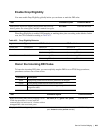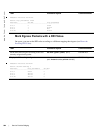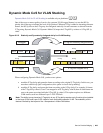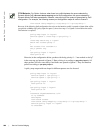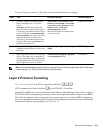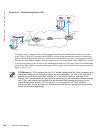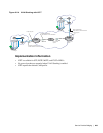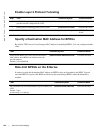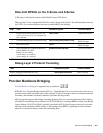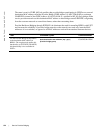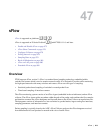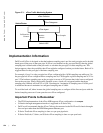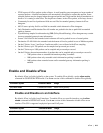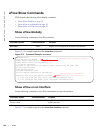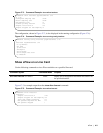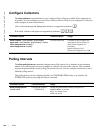
Service Provider Bridging | 971
Rate-limit BPDUs on the C-Series and S-Series
CAM space is allocated in sections called Field Processor (FP) blocks.
There are total 13 user-configurable FP blocks on the C-Series and S-Series. The default number of blocks
for L2PT is 0; you must allocate at least one to enable BPDU rate-limiting.
Debug Layer 2 Protocol Tunneling
Provider Backbone Bridging
Provider Backbone Bridging is supported only on platforms: c s
IEEE 802.1ad—Provider Bridges amends 802.1Q—Virtual Bridged Local Area Networks so that service
providers can use 802.1Q architecture to offer separate VLANs to customers with no coordination between
customers, and minimal coordination between customers and the provider.
802.1ad specifies that provider bridges operating Spanning Tree use a reserved destination MAC address
called the Provider Bridge Group Address, 01-80-C2-00-00-08, to exchange BPDUs instead of the Bridge
Group Address, 01-80-C2-00-00-00, originally specified in 802.1Q. Only bridges in the service provider
network use this destination MAC address so these bridges treat BPDUs originating from the customer
network as normal data frames, rather than consuming them.
Step Task Command Syntax Command Mode
1 Create at least one FP group for L2PT. See
CAM Allocation on page 289 for details on
this command.
cam-acl l2acl
CONFIGURATION
2 Save the running-config to the startup-config.
copy running-config startup-config
EXEC Privilege
3 Reload the system. reload
EXEC Privilege
4 Set a maximum rate at which the RPM will
process BPDUs for L2PT.
Default: no rate limiting
C-Series Range: 64 to 640 kbps
S-Series Range: 64 to 320 kbps
protocol-tunnel rate-limit
VLAN STACKING
Task Command Syntax Command Mode
Display debugging information for L2PT.
debug protocol-tunnel
EXEC Privilege



